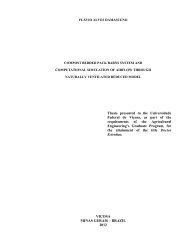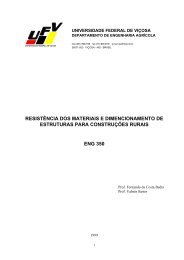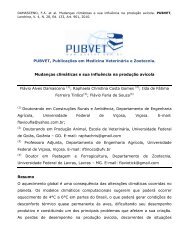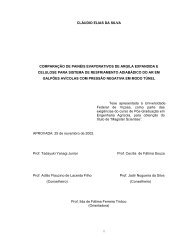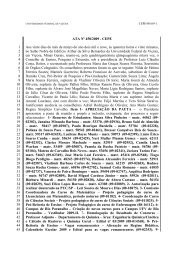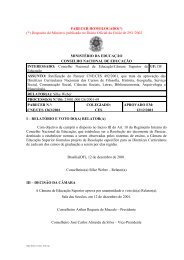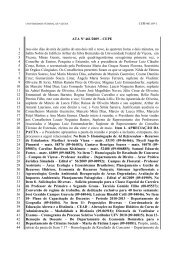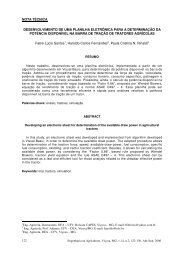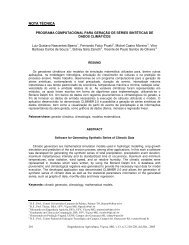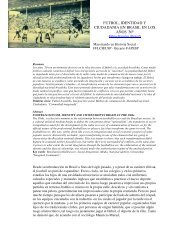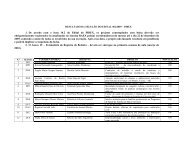ALKALOID BIOSYNTHESIS IN PLANTS: Biochemistry, Cell ... - UFV
ALKALOID BIOSYNTHESIS IN PLANTS: Biochemistry, Cell ... - UFV
ALKALOID BIOSYNTHESIS IN PLANTS: Biochemistry, Cell ... - UFV
Create successful ePaper yourself
Turn your PDF publications into a flip-book with our unique Google optimized e-Paper software.
44 FACCH<strong>IN</strong>I<br />
tryptamine must be transported across the tonoplast before coupling to secologanin<br />
can occur (103). G10H, which catalyzes an early step in secologanin biosynthesis,<br />
is associated with provacuolar membranes (94). SGD, the enzyme catalyzing<br />
the deglucosylation of strictosidine, was suggested to be at least partly bound<br />
to the external face of the tonoplast (162). However, in vivo localization studies<br />
showed that SGD is associated with the endoplasmic reticulum (ER; 55). The P450dependent<br />
monooxygenase T16H, which is involved in the C-16 hydroxylation of<br />
tabersonine, was also shown to be associated with the ER (163). NMT catalyzes<br />
the third-to-last step in vindoline biosynthesis and was found to be associated<br />
with thylakoid membranes (29, 33). However, chloroplast development is apparently<br />
not necessary since NMT activity was also detected in etiolated seedlings.<br />
The last two steps in vindoline biosynthesis, catalyzed by D4H and DAT, occur<br />
in the cytosol (23, 29). Vindoline must then be channeled back to the vacuole<br />
where nonspecific peroxidases necessary for coupling vindoline to catharanthine<br />
are localized (157). Overall, the complex compartmentation of the TIA pathway<br />
suggests the extensive subcellular trafficking of pathway intermediates. Although<br />
the vacuolar uptake of some TIAs, such as ajmalicine and serpentine, has been<br />
studied (15, 108), the mechanisms involved in channeling pathway intermediates<br />
to specific subcellular compartments are poorly understood.<br />
Several BIA biosynthetic enzymes also occur in subcellular locations other than<br />
the cytosol. Of the five noncytosolic enzymes involved in the conversion of (S)reticuline<br />
to dihydrosanguinarine, four (BBE, CFS, SPS, and MSH) are localized<br />
to a membrane fraction with a specific density of δ = 1.14 g mL −1 (3, 9, 10, 143),<br />
while one (PPH) is associated with a membrane fraction with a density (δ =<br />
1.11 g mL −1 ), consistent with that of the ER (171). The membrane-associated<br />
enzyme STS, which is involved in morphine biosynthesis, is also localized to a<br />
microsomal fraction with a density of δ = 1.14 g mL −1 (56). With the exception<br />
of BBE, these noncytosolic enzymes are P450-dependent (14); thus, they must be<br />
membrane-bound proteins of the ER, or ER-derived compartments.<br />
BBE appears to reside as a soluble protein within the lumen of a discrete subcellular<br />
compartment (3, 52). A putative N-terminal signal peptide was detected in<br />
the deduced amino acid sequence of BBE from E. californica (34). Other soluble<br />
enzymes involved in the biosynthesis of berberine are also associated with membranes<br />
of specific density δ = 1.14 g mL −1 , including STOX (3), CDO (52), and<br />
columbamine O-methyltransferase (140). The association of these enzymes with a<br />
membrane fraction of greater density than the ER has led to speculation that distinct<br />
“alkaloid synthesizing vesicles” are found in certain cell types (3). Vesicles with<br />
a density of δ = 1.14 g mL −1 and containing various alkaloids and biosynthetic<br />
enzymes have been visualized within vacuole-like compartments (3). Moreover,<br />
nascent BBE was found to contain a targeting domain comprised of an N-terminal<br />
signal peptide and an adjacent vacuolar sorting determinant (D Bird&PFacchini,<br />
unpublished results). Using the green fluorescent protein as a reporter, BBE was<br />
shown to be targeted to the ER lumen via the signal peptide. Subsequently, the<br />
protein is transported from the ER, possibly as a lumenal component of specific



